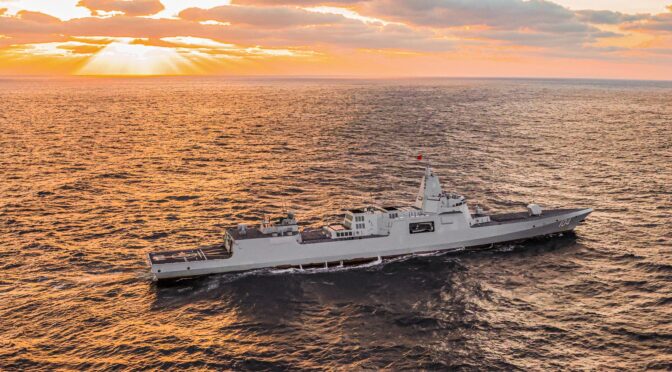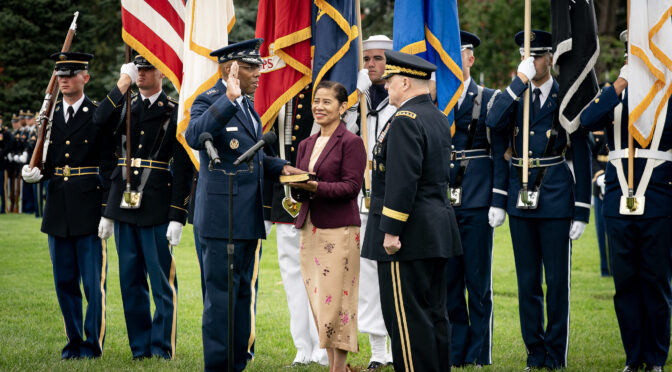By Bill Bray
America has become a deeply partisan country and its military is straining to stay above the partisan fray. Many Republicans see the military today as more of a left-wing social experiment than a warfighting enterprise. Alabama Senator Tommy Tuberville, for example, repeatedly accused the military of this for many months while holding up hundreds of senior officer promotions. Many Democrats have been suspicious for years that most senior military officers prefer Republican administrations and subtly resist implementing Democrat policies with which they disagree. Furthermore, some Democrats have been critical of the military for moving slowly on being more inclusive of historically marginalized groups and adequately addressing sexual assault.
It has become quite common for retired flag and general officers – many only recently retired – to endorse presidential candidates. No longer is it considered unusual and a breach of the nonpartisan norm for a recently retired senior military officer to make such an endorsement, as it was when General P. X. Kelley, former Commandant of the Marine Corps, endorsed George H. W. Bush for president in 1988, or when Admiral William Crowe, former Chairman of the Joint Chiefs, endorsed Bill Clinton in 1992.
The steady erosion of the nonpartisan military norm has gradually fed a popular perception of the officer corps as partisan. The practice has signaled to political party leaders that senior officers can be courted for endorsements or even to become candidates themselves. No matter which party benefits, this trend is corrupting the military’s image with the American people.
Officers who engage in partisan speech are being shortsighted. They are neglecting the critical need for Americans of all stripes to support their military, especially with a confrontation looming with a great power such as China. If most Americans view the military officer corps as partisan, they will tend to view any war as partisan, and domestic politics will no longer stop at the water’s edge. This is dangerous, considering the degree of national commitment required to prevail in a war against China.
For decades, we have expected military officers to remain nonpartisan. This expectation has relied less on law and policy, and more on professional norms. Nevertheless, for those on active duty, clear regulations articulate the lines that cannot be crossed. But even the perception of partisanship is harmful to the profession. There are many gray areas that require officers to use good judgment in adhering to the higher calling of loyalty to the Constitution, especially in the realm of social media.
Of course, on separation from active duty or in retirement, officers are permitted to participate in partisan politics. But even then, they can and should do so in a way that respects their political opponents and the views of all Americans. To do less by using divisive and demeaning rhetoric, let alone language in conflict with the oath to support and defend the Constitution, is reprehensible and highly damaging to the profession.
Unfortunately, in the more recent past at least, the norm of nonpartisanship does not seem to be enough to protect the profession. As a result, the military is being dragged further into partisan politics, with predictable reputational damage.
How partisan has the military officer corps become? Dr. Heidi Urben, a retired Army colonel and now professor at Georgetown University and senior associate at the Center for Strategic and International Studies, has conducted extensive research into this question. Reliable data are difficult to unearth, and her surveys over the past decade have focused almost solely on the Army and relied on older surveys dating back to the late 1980s. Specifically, she examined three popular claims: that the U.S. military officer corps is too partisan, too politically vocal, and too resistant to civilian control.
Urben found a growth in inappropriate political discussion in the workplace. More interesting, she discovered that the use of social media has amplified a damaging perception of a nonpartisan military. With social media, officers’ personal political views too often spill into open view, and the impressions that enlisted service members and the public at large have gained of serving officers being stridently partisan cannot be erased or forgotten just because those officers obey the rules while on duty in uniform.
In 2024, Urben, along with Risa A. Brooks and Michael A. Robinson, published findings on partisanship in the military based on an extensive survey of retired flag and general officers. As they note at the outset, engaging in partisan speech is not always clear-cut:
“In civil-military relations, a trifecta of laws, regulations, and norms govern partisan activity by active-duty military officers…but professional norms on partisan political activity and speech are sufficiently vague, and this vagueness…helps explain the seeming contradiction that retired flag officers both endorse norms that proscribe partisan political activity, but also at times think that actions with clear partisan implications fall within the boundaries of acceptable behavior.”
In other words, what one retired officer sees as unacceptable, another sees as perfectly acceptable—or even a moral imperative. Indeed, it is often difficult for the public to see the distinction between a partisan attack versus a critique of policy, or a frank characterization of a political leader.
Given the findings by Urben, et al., and the partisan trend amid the current political climate, appealing more strongly to the officer corps to regulate itself better might seem a fool’s errand. Consequently, Congress should consider legislating clear constraints on partisan political activity for retired officers, at least for flag and general officers. No doubt attempts to do so would have to overcome First Amendment challenges, but other established democracies have placed greater restraints on retired officers’ political activity.
For example, Congress could enact a waiting period for retired flag and general officers to run for political office (three years, perhaps, as is the case in Israel, though the Knesset has been debating increasing that to as much as 10 years). That would limit the temptation of political parties to try and recruit active-duty officers toward the end of their military careers. In addition, the most senior officers, especially those in positions such as service chiefs and vice chiefs, and the Chairman of the Joint Chiefs of Staff, should, as a condition of retaining their retired pensions, be forbidden from publicly endorsing political candidates for at least five years following retirement.
Within the military, the Department of Defense needs to overhaul Directive 1344.10, “Political Activities by Members of the Armed Forces,” to cover behavior on social media more clearly. When officers engage in partisan political speech on social media without being held to account, they undermine unit cohesiveness and will likely find it far easier to jettison the nonpartisan norm later in their careers and into retirement.
These actions might seem an unacceptable constraint on an officer’s First Amendment protections. But it should be seen as a small price to pay in service of the greater imperative – ensuring civilian control of a nonpartisan military, ensuring the military’s fundamentally nonpartisan nature, and ensuring that it represents all Americans and deserves their support. It is also not as big a stretch as it might appear. All U.S. military officers waive some First Amendment rights when they accept a commission. The additional rules would simply require officers to waive these rights for a little longer if they accept promotion to the highest levels.
Perhaps it is naïve to believe a hyper-partisan Congress could agree to ensure that our military officer corps remains nonpartisan. But it is necessary – essential, even. The institution has shown for years that it can no longer police itself by simply appealing to professional norms. Much damage has been done to the officer corps’ nonpartisan ethos, but it is not irreparable. With executive branch support, Congress can repair the damage – if its members truly lead and not bend to their constituents’ impulses on this important issue.
Captain Bill Bray is a former Naval Intelligence officer and Chief of Naval Operations Strategic Studies Group Fellow. He is the Deputy Editor-in-Chief of the U.S. Naval Institute’s Proceedings magazine and lives in Annapolis, Maryland.
Featured Image: U.S. Air Force Gen. Charles Q. Brown, Jr. attends the Armed Forces Hail in his honor as the 21st Chairman of the Joint Chiefs of Staff at Joint Base Myer – Henderson Hall, VA., September 29, 2023. The ceremony, hosted by Secretary of Defense Lloyd J. Austin III, marked Gen. Brown’s swearing in as Chairman and was attended by President Joseph R. Biden Jr., Vice President Kamala Harris, and other distinguished guests. (DOD Photo by Benjamin Applebaum)



